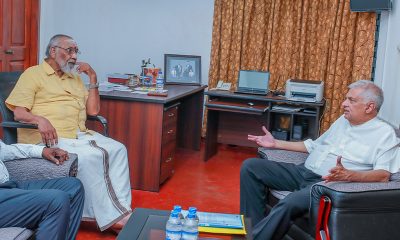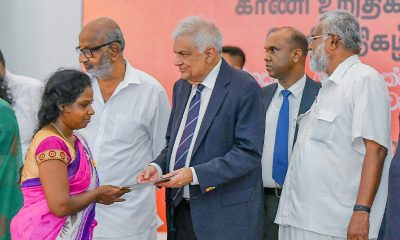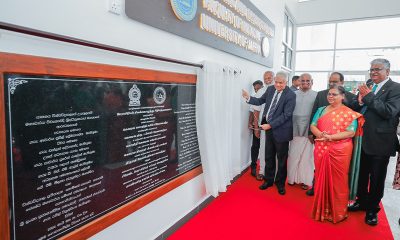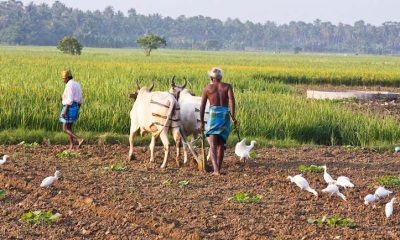Features
The Copper Tumbler and Donkeys in Mannar: A Work of Mourning – IV
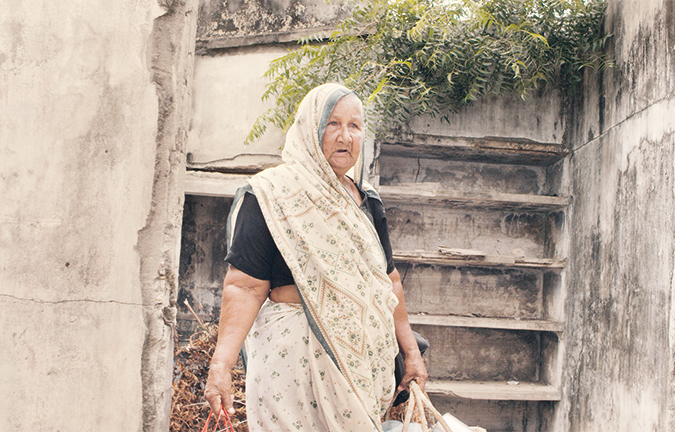
‘it is not narrative that we should abandon but chronology’’
Kumar Shahani
By Laleen Jayamanne
Mourning the Dead: Phaneroscopy
“There is a reality which we each create in our own minds.”
(C.S. Peirce)
The American logician and semiotician C.S. Peirce using the Greek word phaneron, meaning ‘that which appears,’ and adding the suffix skopein, (the Greek word to see, as in Bioscope!), coined the term phaneroscopy. He wanted thereby to capture something common to how we all perceive. He didn’t want to call this subjective mode of seeing an ‘illusion’ or ‘fantasy’ posited against ‘reality’. He elaborated his idea of ‘phaneroscopy’ by saying it is a way of seeing which is not cognitive (being prior to it), a pre-logical, direct awareness, without ego. I think this is much like the way a child, presumably, sees the world before it’s captured in language. Sumathy gives Lalitha phanero-scopic powers. So, as she slowly begins to remember her own childhood in that house, absorbed in the photographs of Jude and of herself as a girl, becoming reflective, but also prodding her siblings insensitively about what actually happened during the war to both the Muslims and to Jude, she begins to perceive visually, what she hears. She herself appears within each of the following events, from which she was in fact absent, away in Canada.
Most of the framed photographs we see in the house are from Sumathy’s own childhood home in Jaffna which she shared with her parents, three sisters and also her two nieces. Even before I learnt this detail, I felt that this home had a shadow cast on it by Sumathy’s own family history which is now public. So, it is the most personal of her films, but she uses her autobiography to testify to those innumerable nameless Muslim folk, too.
The house has shadows, ‘ghosts’ who come in and out. The brother who disappeared, Jude, comes in and out of the film, just as Fatima Teacher does, both as a young woman carrying her precious possessions and then as an old woman. Intriguingly, Sumathy only credits one actor, Asiya Umma, as both the young and the old Fatima Teacher, when realistically one would expect two actors to be named. In the course of the monologue, when her mother tells Lalitha that Fatima Teacher stood right where she now stands, the latter appears. As her head is partly covered by her sari, it is unclear if Fatima Teacher is in fact played by Lalitha, who has inserted herself into that story as she hears it narrated by her crazed mother. But the credits resolve it. However, this sense of uncertainty is important because (disturbed by her mother’s accusatory account of Fatima Teacher), Lalitha creates a film-within- the-film, placing herself in the position of the victim. In appearing at that moment as Fatima Teacher, addressing her friend Daisy Teacher, Lalitha performs an act of mourning.
It’s the musical composition of sequences, with intervals, repetitions and disjunctions between them, which allows Sumathy to abandon chronological progression (without using the usual tired devices like flash-backs as memory images), to play with time in this way.
Three different accounts of Jude’s disappearance are given, two shown. There is that dreaded knock on the heavy wooden door late at night, with two men on a motorbike and car, the boys as they are called, to take Jude away. Lalitha in bed with her cell phone hears the knock and goes to the door in her nighty wrapped in a sheet, asking him to not open the door and watches him being taken away by ‘the boys.’ Earlier there is a snatch of conversation that the story is that the army took Jude away. We see him walking to the church to meet two young Catholic priests, to ask them to intercede with the LTTE, on behalf of the Muslims. Within this sequence we are taken into a large Italianate, grand Catholic church with polished pews and woodwork. But we also see Jude walking into the sea, watched by Lalitha, in the film within the film she creates with herself as a presence.
In this strange retelling, Sumathy is able to make the dead Jude testify to the stories of the many disappeared, without ceasing to be that irreplaceable son of Daisy Teacher. That quiet act of Jude’s suicide, witnessed by Lalitha, standing amongst the braying, foraging donkeys, is a ritual of burial and mourning, an epic cosmos-centric event. The old Fatima Teacher also walks through the mangrove, and earlier through the debris of bomb blasted houses (without their solid timber doors and windows), that might well have been her own dense urban neighbourhood.
In this strange elegiac scene by the sea at night, with the wind and sound of waves lapping the shore, Jude slips off his sarong and simply walks into the ocean slowly. The entire qualitative, tonal, atmospheric mood of the scene amidst nature with Fatima Teacher and Jude and the donkeys as they appear to Lalitha, has a ritualistic, musical quality with its varied rhythms. One exiting life and the other returning from the dead, unreconciled, one might say, amidst the sound of waves. After this long sequence, the film cuts to Jude’s naked corpse washed up on the beach at dawn, spotted by two fishermen who look closely and abandon it.
Lalitha asks her mother to sign over the family home to her. The younger brother asks Lalitha to send the monthly payment for their mother’s expenses directly into his bank account. Neither request is granted. The sister who actually takes care of the mother makes no demands of her more affluent sister but complains about the tedium of her life of chores. But the family gather together with affection as well as acrimony and learn of their trauma and the family history. And the terror of the war years is expressed through a truism of that era by Jesse, who has no time or inclination to linger in the past. She quotes a folk saying of the war years when Lalitha bugs her as to why she didn’t call her or write to her: “People here say those were times when one opened one’s mouth only to drink tea”. A biting sentence condenses the lack of food with terror.
Pedagogy of Film Programming: Suggestions
If a mini retrospective of Sumathy’s body of work is organised, then pairing The Single Tumbler with Ponmani (1976), by Dharmasena Pathiraja, could generate a few more ideas about how to creatively engage with linguistically and culturally diverse communities and cultures, without orientalising Northern landscapes and most especially the ‘Tamil Woman.’ Without a public release in the South and an indifferent short run in Jaffna, now Ponmani has the aura of a classic, one of a kind without a progeny.
This is not quite the case. The way the traditional Hindu Vellala home and its veranda is filmed in Ponmani, finds a different articulation in the way the Christian family inhabits the space of the open house, in the fluid spatial configurations of The Single Tumbler. In both films, changing or frozen family relationships are mapped out spatially through evocative gestures, postures and movements. The traditional Hindu home is marked by silences, while the bilingual Christian home with its different culture is voluble, rather urbane. Sumathy has clearly benefited from Pathi’s work in Jaffna though she is no clone.
It is essential not to forget that this singular film Ponmani was made possible by a visionary tri-lingual higher educational policy formulated by Tamil scholars at the Jaffna University. Pathi and several lecturers were sent to Jaffna University to teach there in the Sinhala medium. During this time, his friendship with Tamil intellectuals and artists resulted in the collaborative film, Ponmani. Until about this time Tamil students from Jaffna were able to study at the National Art School in Colombo along with Sinhala students and there were student exchanges of performances with Jaffna. That was of course possible because lectures were delivered in both English and Sinhala, but with the ‘Sinhala Only’ nationalism hegemonic, English was abandoned.
Sumathy’s documentary Amidst the Villus; Pallaikuli (2021), on the effort of the expelled Muslim populations to return to their homelands would also be important as a companion film to The Single Tumbler.
Ashfaque Mohamed’s debut film Face Cover (2022), with its fine spatial sensitivity and sense of tact, might also be screened together with these two films, to create a generative public context and discourse for these films from different generations and by directors from different ethnicities and set in different regions. He was the assistant director on The Single Tumbler. Sumathy has been a mentor to him and also played the Muslim mother in Face Cover.
Also, perhaps a few of Rukmani Devi’s and Mohideen Baig’s films might be part of it, and Sarungale by Sunil Ariyaratne, where Gamini Fonseka plays the role of a Tamil clerk, might also work well in such a non-linear, thematic mix. Sumathy’s Sons and Fathers about the multi-ethnic composition of the Lankan film industry during July ’83, would create a new political perspective on these films. Ingirunthu remembers the disenfranchisement of the tea estate workers at independence and also the deportation of a large number to India in 1964, despite having lived and worked in Ceylon for generations.
Expulsion of the Muslims
The Expulsion of the Muslims (estimated at 75,000), from the Northern Province by the LTTE is an event of epic magnitude in Lankan history. Refusing to forget the event and its aftermath, The Single Tumbler was made in collaboration with a dedicated ensemble cast and crew (with Sunil Perera’s cinematography, Elmo Halliday on editing and sound design, music direction by Kausikan Rajeshkumar), with a modest budget, but with a sophisticated understanding of ‘film as a form that thinks.’
That dented and burned single copper tumbler on fire is hard to forget, just like Sumathy’s other such images powered by fire. The fiery copper tumbler brings to mind two sentences by the French philosopher Deleuze, in a short piece written just before he committed suicide, being terminally ill. The brusque note, written in haste, is called ‘The Actual and the Virtual’.
He says: ‘Purely actual objects do not exist. Every actual surrounds itself with a cloud of virtual images.’ This idea of ‘virtual images’ Deleuze owes to Henri Bergson who wrote a book titled Matter and Memory in 1895, the year the very first films were projected in Paris. And for Bergson, the concept of the ‘virtual’ is opposed to time as chronology, time as the simple linear succession of past, present and future. He says, speaking more like a poet, that the ‘virtual’, or duration, appears to us in its fullness when we are drunk with wine or dream, or in love, when all that has happened coexists in an intense, expansive present, open to a potentialized future. Film is surely the gift that plunges us into this cloud of virtuality – sometimes; as with The Single Tumbler. (Concluded)
Features
“Independent” Prosecutor’s Office: Myth and Reality
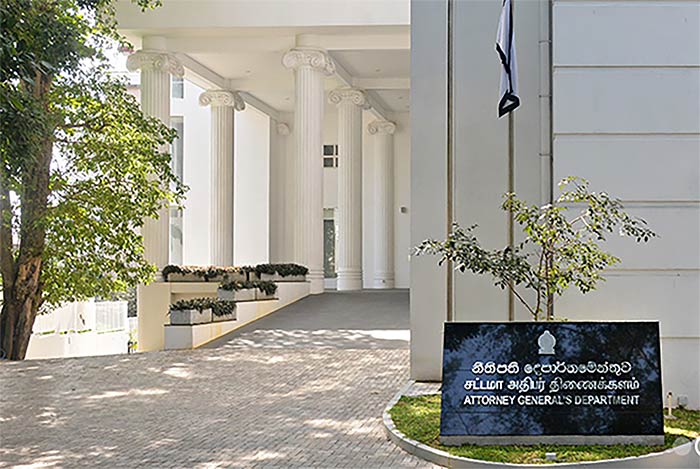
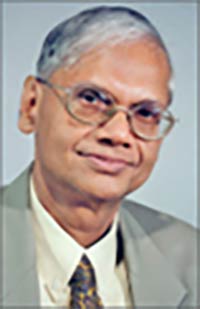 By Professor G. L. Peiris
By Professor G. L. Peiris
D. Phil. (Oxford), Ph. D. (Sri Lanka);
Quondam Visiting Fellow of the Universities of Oxford, Cambridge and London;
Former Vice-Chancellor and Emeritus Professor of Law of the University of Colombo.
I. A Cornerstone of the Legal System
The institution of criminal proceedings is of vital concern to the public. Irrespective of the outcome of proceedings, subjection of a citizen to criminal litigation is fraught with grave consequences, including psychological trauma and impairment of social reputation, quite apart from the expenditure incurred in defending a criminal action.
The law, therefore, goes to considerable lengths to ensure that recourse to criminal proceedings is the sequel to an informed and well-structured process which includes careful consideration of available evidence in a spirit of independence and detachment, far removed from partisan considerations.
II. The Role of the Attorney-General
In our legal system this responsibility belongs to the Attorney-General: it is for him to bring his mind to bear on the entirety of material emanating from police investigations and to make a dispassionate judgment whether the evidence at his disposal, in the surrounding circumstances, warrants the commencement of criminal proceedings.
The solemnity of this burden is underlined by the traditional formulation, in decided cases in our country as well as in other jurisdictions, that the Attorney-General, in performing this function, acts in a quasi-judicial capacity.
This calls for a clear separation of his mindset from that appropriate to the discharge of his other responsibilities. The principal law officer of the Republic, he is the chief advisor to the Government of Sri Lanka, and it frequently falls to his lot to defend, before the courts, senior representatives of the government in Fundamental Rights, writs and other proceedings.
Nevertheless, it is a sacred and inviolable principle that, when it comes to deciding whether criminal proceedings should be launched or, when once begun, should be discontinued, against any defendant or group of defendants, this decision should be demonstrably bereft of any tinge of political or other extraneous element.
This is one of the core values of the system of criminal justice in our country and, indeed, an indispensable pillar of the Rule of Law.
III. Ample Scope of Prosecutorial Discretion
A pivot of our law is the principle of vires or jurisdiction, which requires that a statutory power must necessarily be exercised by the authority on which it is conferred by the legislature.
This is the rationale of the concept of prosecutorial discretion vested in the Office of Attorney-General. Discretion to determine the sufficiency of grounds to institute a prosecution or forward an indictment is that of the Attorney-General alone, and any usurpation of that discretion strikes at the very foundation of the system.
IV. Limiting Criteria
This does not mean, however, that the Attorney-General’s discretion is total or absolute, and altogether beyond the reach of the courts.
It is a salutary feature of our law that Sri Lankan courts, buttressed by judicial experience elsewhere, have formulated a series of criteria which operate as the limits of this discretion and enable intervention, with due restraint, in a limited category of situations.
A trilogy of judicial pronouncements by the Court of Appeal of Sri Lanka(Sandresh Ravi Karunanayake v. Attorney-General CA/Writ/441/2021; Duminda Lanka Liyanage v. Attorney-General CA/Writ/323/2022); Nadun Chinthaka Wickramaratne v. Attorney-General CA/Writ/523/2024) have rendered yeoman service to our law in this regard. The value of this approach lies in its essential sense of balance.
These judgments, by Sobhitha Rajakaruna J., now establish with clarity the frontiers of judicial review in respect of prosecutorial discretion of the Attorney-General.
The applicability of judicial review, in this context, has been accepted unequivocally by our courts: Victor Ivan v. Sarath Silva, Attorney-General (1998) 1SLR 340.
Its ramifications straddle a variety of settings. Where, for instance, the initiation of criminal proceedings is entirely unsupported by any evidentiary basis, the indictment may be impugned in judicial review, by the writ of certiorari. In the relevant academic literature, in particular the writings of Professor Sri William Wade, it is identified as a jurisdictional flaw, in that action in the absence of evidence is considered to have been taken without jurisdiction.
Similarly, prosecutorial discretion exercised by the Attorney-General may be vitiated by a range of factors including plainly discernible bias indicative of mala fides, patent error, consideration of irrelevant matters or failure to consider relevant material, grave procedural illegality or irregularity during the decision-making process – blemishes which, severally or in combination, may amount to abuse of process and, therefore, a potential miscarriage of justice.
Recent trends in Commonwealth law suggest scope for expansion of the ambit of judicial review on the broad ground of palpable unreasonableness (in terms of the well-known Wednesbury test), but this is an extension to be effected sparingly.
While these grounds admit of adequate flexibility in relation to judicial review, there is need for uncompromising insistence on the exclusion of any form of political intervention, or even a well-founded suspicion of it, in the interest of preserving public confidence in the integrity of the prosecutorial process.
V. Contemporary Developments
In recent weeks there has been widespread interest in policy perspectives, and timely changes in the law, in this field.
These developments provide the backdrop to the media statement by the Ministry of Justice on 10 February regarding the proposed establishment of an “Independent Prosecutor’s Office”. What is contemplated, as an initial step, is the appointment of an “Expert Committee” to prepare a Concept Paper on which the views of civil society and the public will be invited.
The composition of the proposed Committee has been announced. It will consist of “1. The Attorney-General or two nominees of the Attorney-General; 2. The Secretary to the Ministry of Justice; 3. A senior judge in the judicial service; 4. The President of the Bar Association of Sri Lanka or his nominee”.
While a committee, so constituted, may be appropriate for the preliminary task of suggesting the outlines of the concept, its personnel, clearly, cannot be involved in operationalising the idea, as it moves forward. The Secretary to the Ministry of Justice is a political functionary, subject to control by the Executive; a member of the Judiciary can play no part in decisions as to the suitability of instituting prosecutions; defending counsel in criminal prosecutions will be drawn from the unofficial Bar.
Sri Lanka had, at one time, a Director of Public Prosecutions (DPP). The experience of the Crown Prosecution Service in the United Kingdom offers valuable guidance. The Government’s proposal, however, seems to go beyond the appointment of a Director and to envisage a comprehensive prosecutorial mechanism coexisting with the Office of Attorney-General.
VI. Critical Policy Issues
A mere change of nomenclature offers no more than a superficial and unconvincing solution. The experience of the DPP in our country was not an altogether happy one and, in any case, lasted only a short time. If susceptibility of the Attorney-General’s Office to political pressure is the core issue, it is hardly circumvented by the proposed supplementary mechanism.
Many structural issues naturally arise: What are the lines of demarcation contemplated? The new Office, if it is to serve a useful purpose, must obviously enjoy substantial independence from the Attorney-General, but a complete severance of the nexus, in terms of coordination, is unrealistic.
What safeguards, not explicitly spelt out in relation to the Attorney-General’s Office, are intended to apply to the proposed new Office? Will the Office of the Independent Prosecutor be served by members of the Attorney-General’s Department? If so, how will clarity be achieved in the delineation of reporting obligations? How will overlapping and interlocking lines of authority be dealt with? Since it has been made clear that the Attorney-General’s Office per se, will survive the proposed innovation, will there be some measure of erosion of the Attorney-General’s constitutionally entrenched functions? If this is the case, a piecemeal approach will not be feasible.
These are complex issues which will no doubt engage the intense interest and vigilance of the public, as the proposed reforms move forward.
Features
Rani’s struggle and pight of many mothers
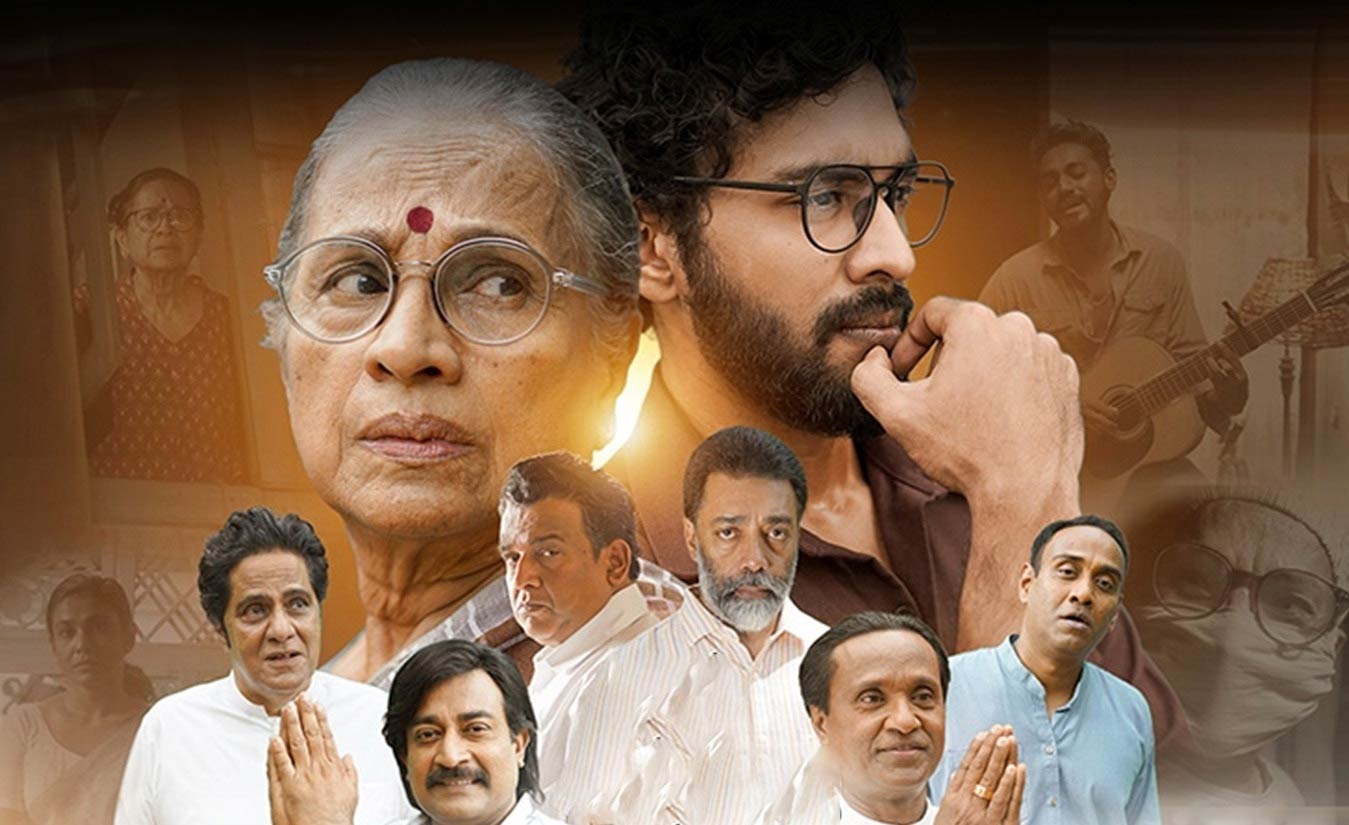
by Anushka Kahandagamage
Unlike Manorani, mothers in both the North and South, whose children disappeared, had no means of reaching out to a state minister in the dead of night, begging for help or even sharing the devastating news of their children’s abduction. They did not have the privilege of calling on influential figures to intervene in their grief. This contrast does not lessen my empathy for Manorani, but rather highlights that a mother’s pain is universal, despite societal divisions or hierarchies. A thought that has been occupying my mind since the making of Rani is why a film is being made about Manorani when so many mothers in this country have lost their children. As Malathi de Alwis highlights, many women involved in the Mothers’ Front never had the chance to take the stage, which was controlled by men. Malathi also argues that Manorani’s special opportunity on that stage was due to her professional background as a medical doctor and her elite status.
Powerful Cinematic Experience
Rani, undoubtedly a powerful cinematic experience, left me frozen, its impact lingering within me. It took me back to the 1987-89 period, a time of terror, when I was just a first grader. The trauma from that era has stayed with our generation ever since. The film brought back events that were slowly fading from my memory, yet still lingered in my nightmares.
Challenging the official memory
Handagama and others involved in the making of the film succeeded in bringing a dark period, which was absent from history books, into the public consciousness or I would say, to the popular discourse. The official memory crafted by the then government regarding this horrifying chapter of history is mostly one-sided, glorifying the rulers while carefully erasing stories that do not align with their narrative. The film uncovers the painful truths, complicating the official narrative constructed by the government. It reveals that history is far more intricate than the simplified version presented in state-crafted accounts.
Subtitles
Creating a film about a dark chapter of the past, one that isn’t recorded in history books, and making it resonate with the public is a formidable challenge. However, the increasing number of people attending the film is a testament to its success. A common challenge faced by artistic films or those addressing complex social issues is their lack of popularity, which often prevents them from entering collective memory. Yet, Rani has effectively overcome this obstacle, achieving both widespread attention and relevance. While the film has undoubtedly succeeded in establishing itself within popular discourse and bringing attention to a dark, often overlooked period in history, the absence of Sinhala and Tamil subtitles presents a significant drawback. These subtitles would have made the film more accessible to a broader audience, particularly those who are directly impacted by the events depicted. Without them, a large segment of the population, including Sinhala and Tamil speakers, may have found it difficult to fully engage with the content and its emotional depth. Subtitles could have enriched the film’s reach and impact, fostering a deeper understanding of the complex and painful history that the movie seeks to bring to light.
Female protagonist
Making a woman the protagonist is an essential reflection of contemporary demands in cinema. Across the globe, there has been a significant shift toward promoting gender equality in film, with an increasing emphasis on strong, multifaceted female characters. This demand is not only a response to the changing social dynamics but also an effort to give a voice to women whose stories have often been sidelined in mainstream narratives. The focus on female protagonists ensures that audiences see a more balanced and inclusive reflection of society on screen.
The Ending and Accountability
The film would have had a more impactful conclusion if it had ended with the peaceful scene of the two women and the child on the beach. This moment was emotionally powerful and seemed like the natural conclusion to the story. However, the final sequence where the police officers are in their casual clothes, drunk and plotting the abduction of Richard, drags on far too long and felt like forcefully imposed. Instead of taking the audience to a peaceful ending, it inadvertently starts to irritate the audience due to its excessive length, detracting from the overall emotional tone of the film. As previously mentioned, the prolonged nature of this scene feels unnecessary and could have been condensed or omitted to maintain the film’s pace and emotional resonance.
In this final scene, perhaps the filmmaker intended to highlight the multiplicity of narratives (as is common in the post-modern era), but it fails in many ways. I strongly object to this scene, as it makes the rulers unaccountable for the murders and reduces the event to a toxic masculine portrayal of the police officers involved.
Features
Excellent Budget by AKD, NPP Inexperience is the Government’s Enemy
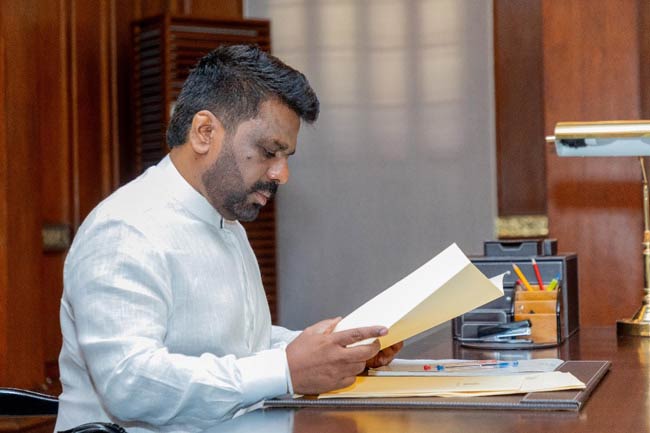
by Rajan Philips
President Anura Kumara Dissanayake has delivered an excellent first budget. It could easily be described as the best budget so far this century and presented in the most dire economic circumstances in Sri Lanka’s modern history. Following his consummate performance in parliament, the President waded into a post-budget forum and joined the country’s economic experts to “dissect new Govt’s maiden budget,” as headlined by the Daily FT, one of the sponsors of the event. Whether one agrees with him or not, there is no question that AKD has been listening to those who knows the subject, has diligently done his homework on the budget file, and knows what he is doing,.
The problem he faces is that he cannot be doing homework on every file for the entire government, and he must find a way to quickly address the collective inexperience of his cabinet. He should not let this inexperience become the enemy that kills the government from within. Hopefully, he will find a way to address this within the framework of the budget and in the delegation of ministerial responsibilities for its implementation.
Somewhere in the budget, the President refers to economic decentralization, to deconcentrate the top heavy Western Province. Unfortunately, the corollary of political decentralization could not find its place in the text. Equally important, the President should also pay attention to ‘cabinet federalisation’ (AJ Wilson’s description of one of DS Senanayake’s quite a few master traits), and more so as he moves ahead to implement the budget proposals.
Ultimately, the success of the budget will be measured in political terms. Read, electoral terms. AKD’s and NPP’s detractors will be winding themselves for political wrestling in the local and later the provincial council elections. The NPP could be expected to hold its ground, but not necessarily all two-thirds of it. It should not at all be strange if the NPP gains ground in the North and East even as it loses some of it in the South. To keep the inevitable losses to the minimum, the government must eschew any and all complacency, which, modifying Mao’s famous Redbook take on it, could be described as the enemy of elections.
Geopolitically, paraphrasing the French Marxist Regis Debray, the NPP government must have its overhead antennas fully alert, but its feet firmly planted on the ground in Sri Lanka. The government cannot avoid being distracted by the global tumults that Donald Trump is creating day in and day out. There will be ripples, even waves, around Sri Lanka depending on what the Modi government decides to do in India to harmonize with the Trump Administration in Washington. Even so, the government’s primary preoccupation in the context of the turmoil in America should be to protect for as long as possible Sri Lanka’s exports to the US which are significant for Sri Lanka’s forex earnings.
At the same time, and consistent with the budget objectives, even as it diversifies its exports the government must diversify its importers. For the next four years, as Trump unfolds his madness, there will be responsive realignments in the Global North even as there will be reconsolidations in the Global South. The NPP government will have to navigate Sri Lanka through these currents without being smothered by them.
There are of course the self-proclaimed Rajapaksa nationalists who want to hitch their broken political wagons in Sri Lanka to the passing hegemon in America. They are in fact ethno-narcissists just like – but writ-small – the racial narcissist that Trump is. Ridiculous as these forces and their politics might seem, indeed as they are, the government should not underestimate their potential to do harm even by accident. Look at Bangladesh to see how political fortunes can dissipate fast, even though the NPP government is in no way comparable to Sheikh Hasina’s rotten government. The eternal home truth is the quick rise and the quicker fall of Gotabaya Rajapaksa.
Setting the Budget Context
The budget speech outlines as its backdrop the 2022 economic crisis that has now become the Rajapaksa era legacy, and as its context the overwhelming verdict of the people in the 2024 presidential and parliamentary elections. In this context, the President calls the budget both “historic” and “challenging,” because the government has to not only lay the foundation for fulfilling the people’s aspirations, but also to dispel “the wrongful picture (of us) created by the myths and malicious political propaganda against our economic policy and vision.” “We have succeeded in that,” the President asserted.
The government has proved its expectant critics wrong and stabilized the economy. All the indicators confirm that – the relatively stable exchange rate at one USD for LKR 300, and not LKR 400 as recklessly scare mongered; the lowering of the Treasury bill rate (8.8%) and getting inflation under control; forex reserves rising past USD six billion; finalizing agreements over debt-restructuring; and most of all keeping essential goods available and avoiding queues. In fairness, the credit for starting the process of economic stabilization belongs to Ranil Wickremesinghe, but post-election expectations in political circles have been that things will start to unravel due to NPP’s inexperience and even incompetence. That did not happen, and President AKD and the NPP government are justified in claiming credit for it.
Mr. Wickremesinghe may have even fancied that another economic crisis this time under an NPP government would give him a second kick at the can of power. No such luck. RW is now part of a team of exes – former ministers and presidents including Maithripala Sirisena – trying to figure out a way to stay relevant in today’s politics. Looking at this aging crowd outside parliament and its slightly younger version in the opposition within parliament, the NPP might fancy its chances of retaining power for more than one cycle of elections. But what the NPP has to contend with ultimately will not be ill equipped politicians but a frustrated electorate.
Apart from President AKD’s versatile feats, the NPP government has little to show to keep the people contented. Recurring rice shortage, the shortfall in coconuts, and the power outage blamed on a monkey tripping off a transformer have certainly taken the shine off the government. Looked from the other end, rice, coconuts and the power outage seem to the only shortcomings that the government is being picked on by media pundits and the political class. But what should concern the NPP government is that any one of them (rice, coconut or power), all of them together, or any similar shortages or failures, are enough to rile the people and bring down a government. Not long ago, it was called aragalaya.
Budget as Political Reset
The budget speech lays down the principles underlying the government’s approach to the economy: sectoral growth sustained by participation and even distribution on the supply side; and balancing roles for the market and the government on the demand side. A GDP growth rate of 5% is targeted for the medium term, predicated on a strong export sector performance while maintaining price stability and ensuring social welfare. Promoting investments, leveraging logistics, revamping tourism, digital transformation of the economy, and unleashing SME potentials through new credit structures are highlighted as the main growth poles. Allocations for health, education, food security, and social benefits are intended to rebuild and strengthen country’s social welfare system.
There is emphasis on Regional Development, including the assurance of special programmes for the Eastern Province, the Malayaga Tamils, and the Northern Province, but there is no mention of Provincial Councils and Local Government bodies and their agency roles in regional development. Regional industrial zones are identified including the promotion of Chemical Manufacturing in Paranthan, KKS and Mankulam in the Northern Province, Galle in the South and Trincomalee in the East. If some of them were to materialize the North and East might be seeing state sponsored industrial activity after more than 70 years when GG Ponnamabalam was Minister of Industries and Fisheries.
Auto Parts and Rubber Products manufacturing is also identified for promotion through industrial zones. What is not clearly indicated is whether new regional industrial initiatives will be tied to the export sector without which they may not be viable, as past experience has shown. Also, on the export front there is no identification of specific products and target markets to match the significant export sector growth that is being championed. Generally, for industries, there should be guardrails for minimizing and mitigating adverse environmental effects.
The budget rightly focuses on the modernization of public transport. Specific projects are identified for bus transport in Colombo and for the rail sector, including the revamping and the extension of the KV Line, multi-modal transport terminal in Kandy, and the expansion of the Thambuththegama Railway Station to function as a hub for transporting agricultural products. Large scale transport projects and rail transport are invariably the responsibility of the central government, but bus transport operations including those in Colombo and Kandy are better assigned to provincial and even larger municipal governments.
The budget provides for settling the legacy debt of the Sri Lankan Airlines (SLA) in the hope that SLA would hereafter become a viable enterprise. For other SOEs, the budget is proposing the setting up of a Holding Company again with the hope of revitalizing the mostly under-performing State Owned Enterprises (SOEs). Whether this approach is motivated by patriotic sentiments or political calculations, there is little support for it from past experience, except for enterprises in the crucial servicing and energy sectors.
The budget gets quite specific in its proposals for the agricultural and food sectors, especially rice and coconuts. At long last, there is official admission at the highest level that there is no data and information system for the “entire value chain” from paddy production to rice consumption. There is no immediate solution to this except the assurance to find one through the ADB funded “Food Security Livelihood Emergency Assistance Project” and a related World Bank project.
Coconuts are easy to count and difficult to hide. Some 4,500 million nuts are the projected demand for 2030, with 2,700 for the coconut industry and 1,800 for household consumption – at one per household per day. The problem is with production and the budget is allocating money for high yielding seedlings to be used in a new Northern Coconut Triangle extending from the coconut rich Northwestern Province, recommended by the Coconut Research Institute and mirror imaging the long established Southern Coconut Triangle. Better later than never, even when it comes to nuts.
All in all, the budget provides a good framework for the NPP government to reset its political road map. To succeed, the resetting must involve delegations at the ministerial level and following through to local communities and political grassroots. Equally important will be the medium in between, and the challenge to the NPP government is in resurrecting and using the currently defunct provincial and local government agencies.
-

 News5 days ago
News5 days agoCommercial High Court orders AASSL to pay Rs 176 mn for unilateral termination of contract
-
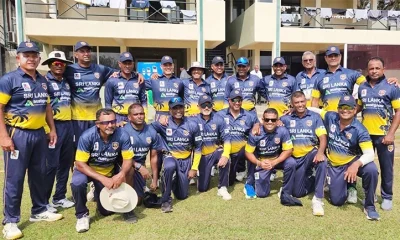
 Sports4 days ago
Sports4 days agoSri Lanka face Australia in Masters World Cup semi-final today
-
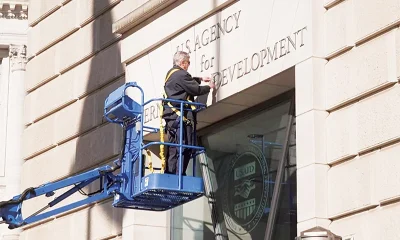
 Features6 days ago
Features6 days agoUSAID and NGOS under siege
-
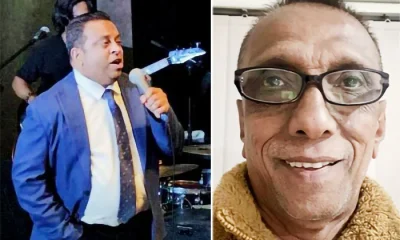
 Features6 days ago
Features6 days agoDoing it in the Philippines…
-

 Midweek Review5 days ago
Midweek Review5 days agoImpact of US policy shift on Sri Lanka
-

 News4 days ago
News4 days agoCourtroom shooting: Police admit serious security lapses
-
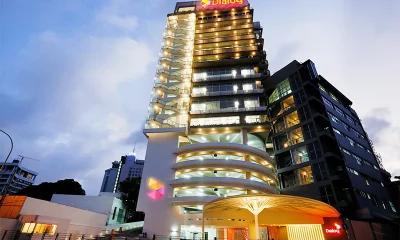
 Business6 days ago
Business6 days agoDialog delivers strong FY 2024 performance with 10% Core Revenue Growth
-
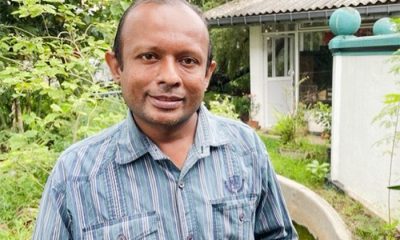
 News5 days ago
News5 days agoFSP lambasts Budget as extension of IMF austerity agenda at the expense of people


